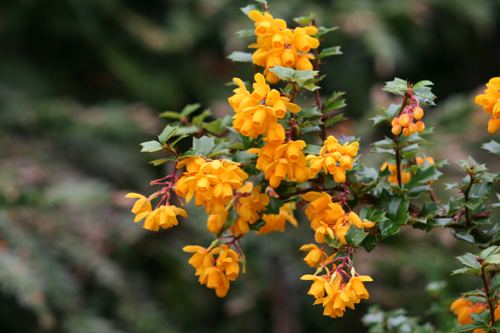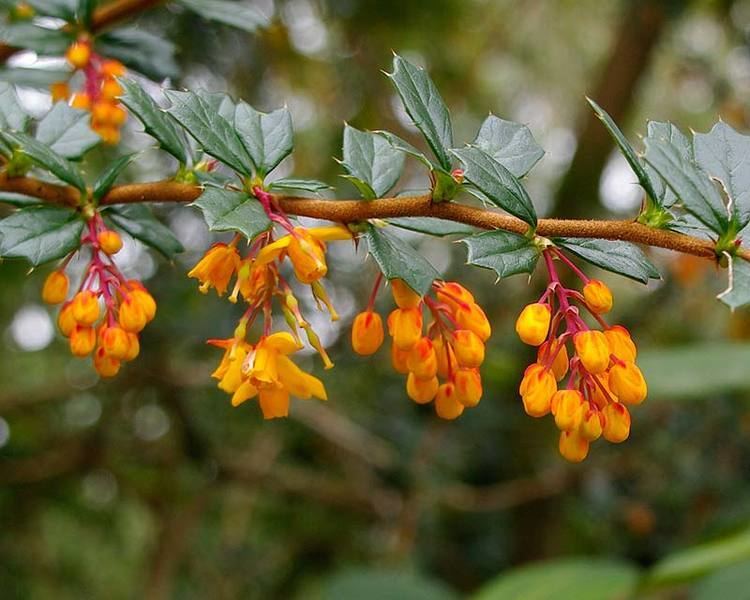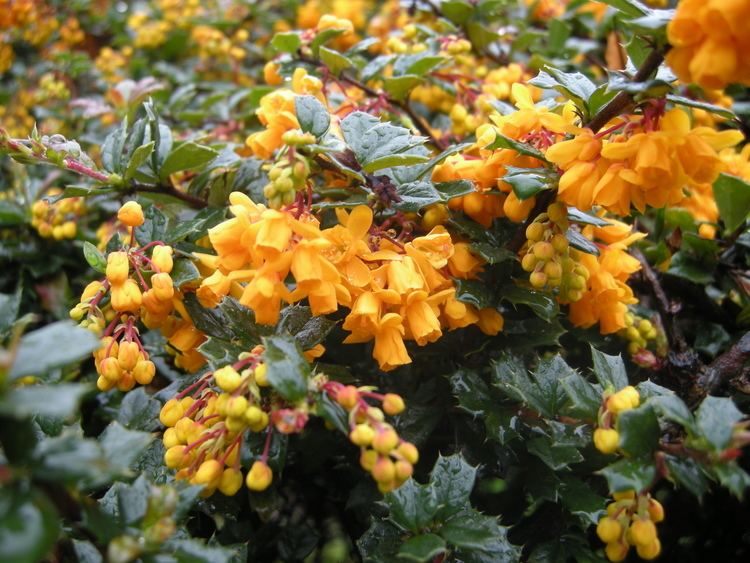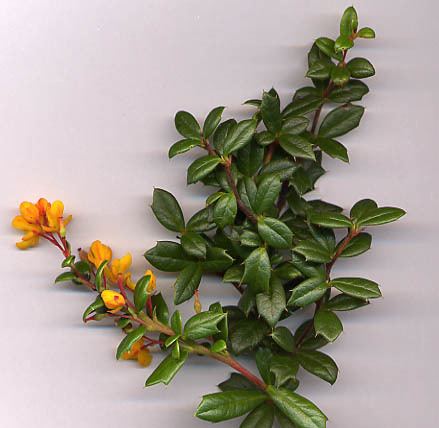Rank Species | Genus Berberis Higher classification Barberry | |
 | ||
Similar Barberry, Berberis microphylla, Berberis soulieana, Berberis julianae, Berberidaceae | ||
Berberis darwinii bonsai tree
Berberis darwinii is a species of barberry in the family Berberidaceae, native to southern Chile and Argentina and naturalized elsewhere. English common names include 'Darwin's Barberry'. Vernacular names include michay, calafate, and quelung.
Contents
- Berberis darwinii bonsai tree
- Berberis darwinii darwinsbroddur bjarnaber skrautrunni gar pl ntur bl mstrandi runni
- Description
- Invasive species
- References

Berberis darwinii darwinsbroddur bjarnaber skrautrunni gar pl ntur bl mstrandi runni
Description
It is an evergreen thorny shrub growing to 3–4 m tall, with dense branches from ground level. The leaves are small oval, 12–25 mm long and 5–12 mm broad, with a spiny margin; they are borne in clusters of 2–5 together, subtended by a three-branched spine 2–4 mm long. The flowers are orange, 4–5 mm long, produced in dense racemes 2–7 cm long in spring. The fruit is a small purple-black berry 4–7 mm diameter, ripening in summer.

B. darwinii was discovered (in Western science) in South America in 1835 by Charles Darwin during the voyage of the 'Beagle'; however, the berries of this species were consumed by prehistoric native peoples in the Patagonian region over millennia. The species was one of many named in honour of Darwin.

It is a popular garden and hedging shrub in the British Isles. The Royal Horticultural Society has given the species its Award of Garden Merit. The edible fruit is very acidic.
Invasive species

B. darwinii is regarded as an invasive plant pest in New Zealand that escaped from gardens into indigenous plant communities via its bird-dispersed seeds. It is considered a serious threat to indigenous ecosystems throughout New Zealand and is listed on the National Pest Plant Accord. In Australia, the species is naturalised in the states of South Australia, Victoria, New South Wales and Tasmania. The species has also become sparingly naturalized in the US states of California and Oregon. It is often planted and sometimes naturalized in Ireland.
